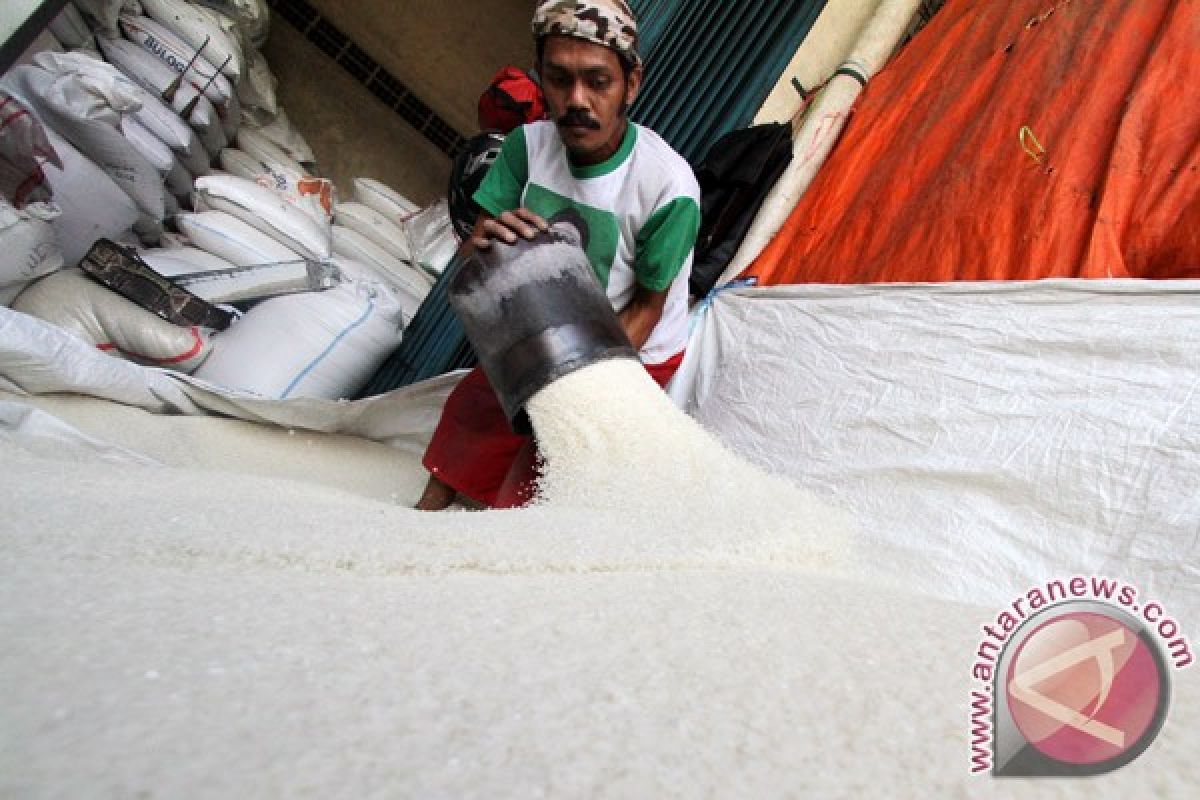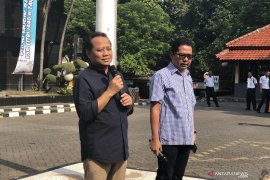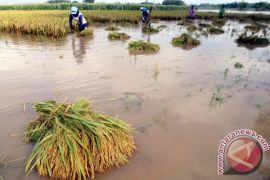The agency also saw a decline in its rice imports in 2012 by about 157.14 percent from 2011, which were 1.8 million tons, predicting that as of next year the country would no longer need to import rice.
"It is not likely that we will import rice because the ministry of agriculture has set itself the target of raising production by about 6 percent to 72-74 million tons," Bulog President Director Sutarto Alimoeso said last week.
Sutarto explained that national rice stocks at the end of the year reached 2.3 million tons, while rice procurement at home reached 3.7 million tons. "Rice stocks and rice procurement at home are in the best condition ever, as of the end of December. This is the best condition in Bulog`s history," he said after attending a seminar on Indonesian economic prospects for 2013.
He added that the company applied an `ant-nest` system to reach targets for stocks and domestic rice procurement.
Bulog is now prepared to carry out market operations to offset price hikes, which usually took place during the October-November-December-January-February period.
Suatarto said that the large rice stocks and rice procurement at home were also followed by a decline in rice imports. This year, rice imports reached 700 thousand tones, a decline of 157.14 percent from the previous year, which were 1.8 million tons.
"This is supported by an increase in rice production of 4.87 percent, compared with last year`s. We import rice because it increases stocks and stabilizes rice prices at home," Sutarto said.
He said he hoped that rice prices would not trigger inflation. On the other hand, the interest of farmers should also not be harmed when rice prices are affected by other pressures.
"I don`t think there are farmers who said that the price of rice fell this year, thanks to our measures in using the `ant-nest` system," he noted.
In the run-up to the end of the year, Bulog is still buying up to 5,000 tonnes per day of domestically grown rice, although stocks have reached 2.2 million tons, of which 300 thousand tonnes were imported from Vietnam.
Bulog usually channeled some 260-300 thousand tonnes of its stocks per month to poorer Indonesians. By including the December disbursement to the poor, the 2.2 million tons in stock would be reduced to 1.9 million tons. It is because of this that rice was imported to maintain the stocks at 2.3 million tons, as Bulog imported 400 thousand tons.
"Usually, Bulog`s stocks at the end of the year are less than two million tons, but now it reached 2.3 million tonnes," Sutarto said. All of the imported rice arrived before December 31, 2012.
This year, Bulog imported only 700 thousand tonnes of rice to help maintain year end rice stocks, of which 600 thousand tonnes came from Vietnam and the remaining 100 tonnes from India.
"We did not import rice from Thailand and Cambodia because of price problems," he added.
In the meantime, the Ministry of Agriculture has set itself a target of producing 72.6 million tonnes of unhusked rice in 2013, up 5.4 percent from this year`s rice production target of 68.96 million tonnes.
Indonesia, with a population of about 240 million, needs some 33 million tonnes of rice for domestic consumption each year.
Therefore, Agriculture Minister Suswono said he hoped that production next year would reach 74 million tonnes, or an increase of about six percent, instead of the target of 5.4 percent.
"We hope rice production next year would increase by six percent to achieve a surplus. This is about 74 million tonnes of unhusked rice," the minister said.
He noted that rice production increases in 2012 almost reached five percent and that he is optimistic that the percentage would increase further in 2013. "This year, based the Central Bureau of Statistics (BPS)`s forecast II, rice production increased by 4.87 percent, or almost five percent," he said.
In the Cipinang Rice Wholesale market in East Jakarta, supplies reached between 2,500 and 2,800 tons every day. "This is an indication that this year the rice supply is very good, regardless of the fact that planting seasons have been delayed," the minister added.
Indonesia has about 14.59 million hectares of rice farmlands. If the damage from pests and the impacts of droughts and floods are taken into account, about 14.08 million hectares of this farmland could produce harvestable yields.
"In order to achieve the rice production target for 2013, we are cultivating 14.59 million hectares of farmland, of which at least 14.08 million hectares are expected to be in full production," Minister Suswono said.
He stated that productivity was expected to reach 5.12 tonnes per hectare next year, and the government will seek to ensure that agricultural land was not used for any other purpose than cultivation.
"Weather conditions next year are predicted to be similar to this year`s. Therefore, rice production could be affected by floods, droughts or pests," Suswono pointed out.
"About 2.4 percent of the nation`s rice fields are likely to be affected by pests, while 3-5 percent could see decreased production due to poor climatic conditions," he added.
(A014/KR-BSR/O001)
Reporter: Andi Abdussalam
Editor: Jafar M Sidik
Copyright © ANTARA 2012











